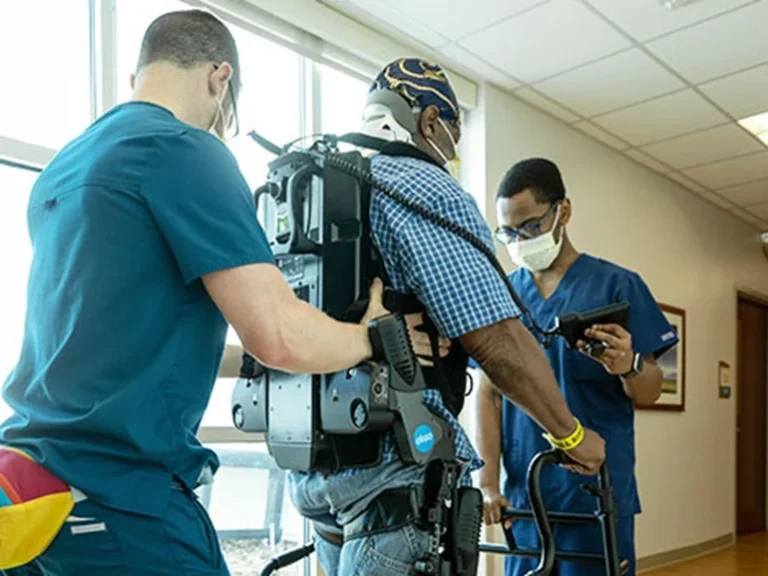Rehabilitation is a transformative journey that requires patience, dedication, and proper tools and practices to restore mobility, particularly in walking. As someone deeply entrenched in the rehabilitation field, I have seen firsthand the resilience of individuals striving to regain their ability to walk, each step representing a victory over adversity. Walking is not a physical activity; it embodies independence and freedom, making rehabilitation a critical component of recovery for many individuals. In this article, I will delve into the various facets of rehabilitation and the multifaceted approaches that enhance walking abilities.
Understanding the Foundation of Rehabilitation
At its core, rehabilitation is about restoring function and improving quality of life after an injury, surgery, or illness. It encompasses many practices and disciplines, all aimed at helping individuals regain lost capabilities. For those facing challenges with walking, the journey often begins with a comprehensive assessment by healthcare professionals, including physiotherapists, occupational therapists, and physicians. This evaluation is crucial as it identifies the specific areas that need attention, whether it be muscle weakness, joint stiffness, balance issues, or neurological impairments.
The Role of Physical Therapy in Walking Rehabilitation
Physical therapy is a cornerstone of rehabilitation, especially for individuals seeking to improve their walking abilities. Through targeted exercises and techniques, physical therapists strengthen muscles, enhance flexibility, and improve coordination. A personalized exercise regimen is developed, often incorporating stretching, resistance training, and balance exercises. These exercises address physical limitations and build confidence in one’s ability to walk independently.
Assistive Devices: Bridging the Gap
For many individuals undergoing rehabilitation, assistive devices play a pivotal role in bridging the gap between dependence and independence. Devices such as walkers, canes, and crutches provide support and stability, allowing individuals to practice walking with reduced risk of falls. Advanced technology has also introduced innovative solutions like exoskeletons and robotic-assisted walking devices, which offer more support and help movement for those with severe mobility impairments. The choice of device is tailored to the individual’s needs, ensuring optimal support and promoting progress.
The Importance of Gait Training
Gait training is an integral component of walking rehabilitation, focusing on improving how an individual walks. This involves analyzing the walking pattern and adjusting to enhance efficiency and safety. Therapists use various techniques, such as treadmill training and biofeedback, to help individuals develop a more natural and effective gait. Gait training improves walking mechanics and reduces the risk of injury by addressing compensatory movements that may arise from weakness or imbalance.
Hydrotherapy: Embracing the Healing Power of Water
Hydrotherapy, or aquatic therapy, offers a unique environment for rehabilitation, particularly for those with walking difficulties. Water’s buoyancy reduces the impact on joints, allowing individuals to perform exercises with greater ease and less pain. The resistance provided by water also helps build strength and endurance. Many rehabilitation centers incorporate hydrotherapy into their programs, recognizing its benefits in enhancing mobility and promoting relaxation.
Neurological Rehabilitation: A Holistic Approach
Neurological rehabilitation offers a holistic approach for individuals with neurological conditions affecting their walking abilities, such as stroke or spinal cord injuries. This specialized form of rehabilitation addresses the complex interplay between the brain, nerves, and muscles. Techniques such as constraint-induced movement therapy, neuroplasticity exercises, and virtual reality-based interventions stimulate the nervous system and encourage recovery. Neurological rehabilitation is often multidisciplinary, involving collaboration between neurologists, physiotherapists, and occupational therapists to create a comprehensive treatment plan.
The Psychological Aspect of Rehabilitation
Rehabilitation is not solely a physical try; it also encompasses psychological and emotional dimensions. The journey to regaining mobility can be fraught with challenges and setbacks, making mental resilience an essential component of the process. Psychological support, whether through counseling, support groups, or mindfulness practices, can help individuals cope with the emotional toll of rehabilitation. Encouragement and motivation from family, friends, and therapists also play a crucial role in sustaining progress and fostering a positive outlook.
The Role of Nutrition in Recovery
Nutrition is often overlooked in rehabilitation, yet it plays a significant role in recovery and well-being. A balanced diet rich in essential nutrients supports tissue repair, reduces inflammation, and provides the energy needed for rehabilitation exercises. Proteins, vitamins, and minerals are critical for muscle recovery and bone health. Dietitians and nutritionists can provide guidance on creating a nutritional plan that complements rehabilitation efforts and supports optimal recovery.
Technological Innovations in Rehabilitation
Technology has revolutionized rehabilitation, introducing innovative tools and methods that enhance recovery. Virtual reality (VR) and augmented reality (AR) offer immersive environments for practicing walking and balance exercises, making rehabilitation more engaging and effective. Wearable devices and sensors provide real-time feedback on movement, allowing therapists to watch progress and make necessary adjustments. Tele-rehabilitation has also gained traction, providing remote access to therapy sessions and resources, thus increasing accessibility for individuals with mobility challenges.
Community Support and Integration
Rehabilitation extends beyond the clinical setting, emphasizing the importance of community support and integration. Community programs and support groups offer opportunities for individuals to connect with others facing similar challenges, share experiences, and gain encouragement. Social interactions and community involvement contribute to a sense of belonging and purpose, enhancing the rehabilitation experience. Furthermore, community-based rehabilitation initiatives focus on creating accessible environments that promote inclusivity and support individuals in their journey toward independence.
Conclusion
In conclusion, rehabilitation is a multifaceted journey encompassing physical, psychological, and social dimensions, all working harmoniously to restore mobility and enhance quality of life. The path to regaining walking abilities is paved with physical therapy, assistive devices, gait training, and innovative technologies, each playing a vital role in recovery. As someone deeply committed to rehabilitation, I have seen the transformative power of these interventions, witnessing individuals reclaim their independence and confidence. Ultimately, rehabilitation is more than walking; it is about rediscovering one’s potential and embracing a fulfilling and empowered life. The keyword “Rehabilitation” encapsulates this profound journey, highlighting resilience and determination and defining the recovery path.

